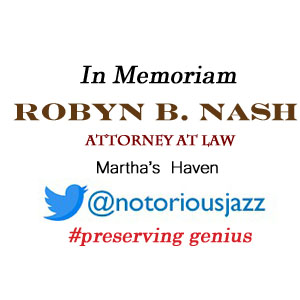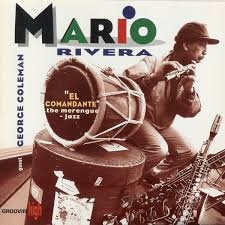
Daily Dose Of Jazz…
Mario Rivera was born on July 22, 1939 in Santo Domingo, Dominican Republic and learned to play during his childhood. Moving to New York City in 1961 at 22 he started working with singer Joe Valle as his accompanist. He spent two years with bandleader Tito Rodríguez. During his career he worked with Mongo Santamaria, Eddie Palmieri, and Machito.
From the 1970s to the 1990s he worked with Tito Puente. Both appeared in the films Calle 54 and The Mambo Kings. In 1988 he became a member of the United Nations Orchestra led by Dizzy Gillespie. He was also a member of the Afro-Cuban Jazz Band led by Chico O’Farrill. His only solo album, El Commandante, was released in 1996.
He recorded seventy-six albums as a sideman with Willie Colon, Cheo Feliciano, Dizzy Gillespie, Kip Hanrahan, Conrad Herwig, Giovanni Hidalgo, Chico O’Farrill, Eddie Palmieri, Tito Puente, Tito Rodriguez, Típica 73, Africando, Alfredo “Chocolate” Armenteros, Soledad Bravo, George Coleman, Junior Cook, Rafael Cortijo, Tito Gomez, Jerry Gonzalez, Juan Luis Guerra, La Lupe, Machito, Arturo O’Farrill, Pat Patrick, Bobby Paunetto, Daniel Ponce, Louie Ramirez, Paquito D’Rivera, Alfredo Rodriguez, Mongo Santamaria, Laba Sosseh, Juan Pablo Torres, Stanley Turrentine, Dave Valentin, Fernando Villalona, and Pete Yellin.
Saxophonist Mario Rivera, who also played trumpet, flute, piano, vibraphone, congas, and drums, died from cancer on August 10, 2007 in New York City.
More Posts: bandleader,congas,drums,flute,history,instrumental,jazz,music,piano,saxophone,trumpet,vibraphone
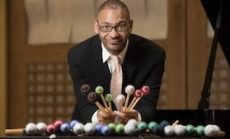
JASON MARSALIS
Jason Marsalis – Vibraphone | Adam Shulman – Piano | David Ewell – Bass | Jaz Sawyer – Drums
From a tender young age it was clear that Jason Marsalis had what it took to be great. Jason is the son of pianist and music educator Ellis Marsalis and his wife Dolores, and the youngest sibling of Wynton, Branford and Delfeayo. Together, the four brothers and their patriarch Ellis, comprise New Orleans venerable first family of jazz.
Ellis and Dolores began to cultivate Jason’s interest in music at age three, with the purchase of a toy set of drums. Jason is fond of telling the story of a game he and his parents would play with the drums. “When I was three, my parents bought me a toy drum set and the used to introduce me to an
imaginary audience. They would say, ‘Ladies and gentleman introducing the fabulous Jason!’ and I would come out and start banging away much to my parents delight. I too enjoyed it to the point that I started to go up to my parents unsolicited and say, ‘Dad, introduce me again!’”
By age six, not only had Jason gotten his first real drum set, but he was also taking lessons from the legendary New Orleans drummer James Black. At age seven he was sitting in with his father’s jazz group, as well as playingwith his trombonist brother Delfeayo. Jason was progressing so rapidly as a drummer that in 1984 his father started using him consistently on engagements. Jason was starting to become a seasoned road veteran before the age of nine, even traveling to the prestigious Berklee School of Music in Boston for older brother Delfeayo’s recital.
Though Jason had also taken up violin at age five, drums remained his primary focus throughout his grade school years. However, in his last year living in Richmond, VA,it was as a member of a junior youth orchestra that he first discovered the percussion section. The following year, Jason gave up the violin and focused exclusively on percussion. In 1991, he auditioned and was accepted to the acclaimed New Orleans Center for the Creative Arts High School (NOCCA). Throughout his high school years he continued to hone his skills by playing gigs with his father and brothers, as well as studying orchestral percussion techniques at the venerable Eastern Music Festival. Shortly after graduation from NOCCA in 1995, Marsalis ascended to the drum throne of a new group lead by virtuoso pianist and former sideman for Wynton Marsalis, Marcus Roberts. Despite a demanding touring schedule with Roberts, Marsalis furthered his educational goals by attending Loyola University in New Orleans, as well as studying composition with notable classical composer, Roger Dickerson. While Marsalis made appearances with such international jazz luminaries as Joe Henderson and Lionel Hampton, he was visible on the New Orleans scene working with a diverse cross section of bands from Casa Samba (Brazilian), Neslort (jazz fusion) Summer Stages (children’s theater), Dr. Michael White (traditional jazz) and many others. It was in 1998 that he co-founded the Latin-jazz group Los Hombres Calientes. While recording two albums with the group, Marsalis also produced two albums under his own name, Year of the Drummer (1998) and Music in Motion (2000), as well as producing reissues and current recordings of his father on their self-owned label, ELM Records.
More Posts: adventure,club,genius,jazz,music,preserving,travel,vibraphone

Daily Dose Of Jazz…
Alan Branscombe was born on June 4, 1936 in Wallasey, Cheshire, England into a family of musicians. His father and grandfather were professional musicians and began on alto sax at age six. As a child he played drums with Victor Feldman in a talent show as a child.
During his time in the Army he played with Jeff Clyne in 1954–56. He toured and recorded with Vic Ash in 1958, recorded with Tony Kinsey the following year, and toured Japan with Stanley Black at the turn of the new decade. Alan worked with John Dankworth as pianist and vibraphonist intermittently between 1960 and 1972, including in the 1963 film The Servant.
Joining Harry South’s band at Ronnie Scott’s club in the mid-1960s, Branscombe went on to play as a sideman with Tubby Hayes, Stan Tracey, and Paul Gonsalves through the decade. He played with Ben Webster in 1965 and again in 1970, and in the Seventies he was with Albert Nicholas, toured in Europe with Stan Getz, and played with the Lamb-Premru group around 1971.
As a leader Branscombe recorded with Tony Kinsey and Tony Coe as sidemen on the album The Day I Met the Blues in 1977. As a session musician, he played tenor saxophone on The Beatles song Got To Get You Into My Life.
Pianist, vibraphonist, and alto saxophonist Alan Branscombe died on October 27, 1986.
More Posts: bandleader,history,instrumental,jazz,music,piano,saxophone,vibraphone
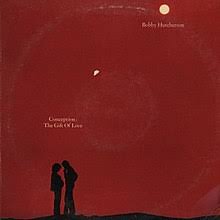
Requisites
CONCEPTION: THE GIFT OF LOVE | BOBBY HUTCHERSON
Conception: The Gift of Love is a post bop album by vibraphonist Bobby Hutcherson. The album was recorded over a two day period on March 15 & 16, 1979 at A&R Recording Studios in New York City and at the Van Gelder Studio in Englewood Cliffs, New Jersey. The 37 minute, 52 second album was produced and arranged by Cedar Walton and released on the Columbia Records label.
Vibraphonist Bobby Hutcherson’s quintet includes pianist George Cables, bassist James Leary, drummer Eddie Marshall and percussionists Bill Summers and Kenneth Nash. He brings a stellar horn section to the session with flutist Hubert Laws, trumpeters Jon Faddis, Danny Moore, Anthony Tooley, Joseph B. Wilder, tenor trombonists Robert Alexander, John Gale, Urbie Green, bassoon and bass clarinetist Romeo Pinque, alto saxophone Lenny Hambro, and tenor saxophonists Daniel Trimboli and Frank Wess.
The seven originals were composed by the band members. Side One opens with the leader’s composition No Siree Bob (7:00), followed by Clockwise by Cedar Walton (6:39), and closes with James Leary’s Remember to Smile (5:38). Side Two commences with Dark Side, Light Side by George Cables (4:06), then another Leary composition Hold My Hand (3:58), Eddie Marshall’s Dreamin’ (6:07) and closes with a second Cable composition titled Quiet Fire (4:24).
Though some critics have claimed this album to be one of his lesser releases with nothing memorable occuring, there are some who state it is a masterpiece of lyrical, straight ahead jazz that is melodically beautiful. I found it to be an enjoyable escape and leave it to you to discover for yourself.
More Posts: choice,classic,collectible,collector,history,instrumental,jazz,music,vibraphone
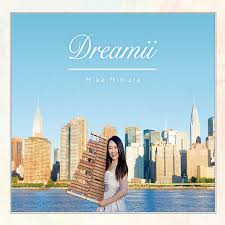
Daily Dose Of Jazz…
Mika Mimura was born in Osaka, Japan on April 18, 1978. She began to play marimba when she was 6 years old. She studied classical music at Osaka College of Music and finished her Master’s degree at the college. Inspired by pianist Makoto Ozone, she began her study of jazz vibraphone after graduation. She entered Berklee College of Music in 2004 and studied with Dave Samuels, Ed Saindon, Tiger Okoshi, and Ed Tomassi , among others.
Mika became a regular member of Phil Wilson’s Rainbow Big Band and Rainbow All Stars. In 2007 she performed with Greg Osby in 2007. She joined The BandA ecLectics, whose leader, Petros Sakelliou, had won the first prize at Thelonious Monk Institute Composition Competition. Together they played the Kodak Theatre in Los Angeles, California. She has performed many times in concert throughout the Boston, Massachusetts and New York City areas.
Vibraphonist Mika Mimura, who is currently a part of the New York City jazz scene, continues to energetically perform, compose and arrange in jazz or classical.
More Posts: bandleader,history,instrumental,jazz,marimba,music,perccussion,piano,vibraphone




